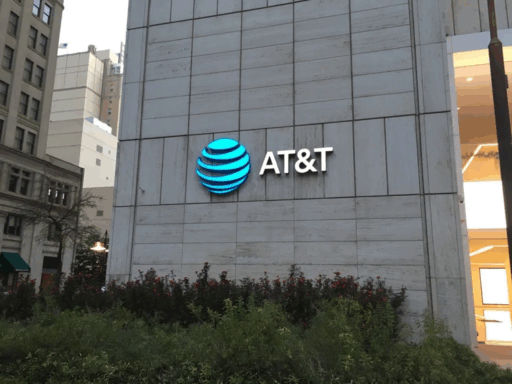AT&T, one of the world’s largest telecommunications companies, plays a crucial role in shaping the digital landscape, providing connectivity for individuals, businesses, and governments. With a presence in over 200 countries and territories, AT&T has a far-reaching influence on the global communications infrastructure. As such, the company has a significant responsibility to integrate sustainability into its business practices. Over the years, AT&T has continuously adapted its sustainability strategy to respond to the growing concerns around climate change, resource scarcity, and social equity, ensuring that its operations align with the long-term interests of its stakeholders, including its customers, employees, investors, and the global community.
In this comprehensive analysis, we will explore AT&T’s sustainability journey, focusing on its goals, key achievements, challenges, and future directions. The article will delve into AT&T’s approach to net-zero emissions, resource efficiency, community engagement, circular economy, and governance practices while also examining its efforts to leverage technology for positive environmental and social impact.
Sustainability Strategy and Goals
AT&T’s sustainability strategy is grounded in its commitment to reduce environmental impacts, enhance societal well-being, and ensure the long-term sustainability of the business. The company’s vision is to create a positive impact on the environment while delivering the benefits of connectivity and technology to its customers and communities.
The company has framed its sustainability efforts within the context of its Environmental, Social, and Governance (ESG) initiatives. AT&T’s sustainability strategy is aligned with the United Nations Sustainable Development Goals (SDGs), particularly:
- SDG 7: Affordable and Clean Energy – By promoting energy-efficient solutions and reducing its carbon footprint.
- SDG 9: Industry, Innovation, and Infrastructure – Through its commitment to providing innovative telecommunications solutions while minimizing environmental harm.
- SDG 12: Responsible Consumption and Production – Emphasizing circular economy principles such as e-waste recycling and responsible sourcing.
- SDG 13: Climate Action – Addressing the challenge of climate change with a science-based approach to reduce emissions.
Net Zero and Carbon Emissions
AT&T is committed to achieving net-zero greenhouse gas (GHG) emissions by 2035, an ambitious target that reflects the company’s broader goals of contributing to global climate action. The company’s carbon footprint comes from its direct operations (Scope 1), purchased electricity (Scope 2), and emissions from its supply chain and customer use of services (Scope 3). AT&T’s strategy to reduce emissions focuses on energy efficiency, renewable energy procurement, and the decarbonization of its operations and supply chain.
Key Emissions Reduction Strategies
- Renewable Energy Transition: AT&T has committed to sourcing 100% renewable energy for its global operations by 2025, up from 50% in 2020. This transition is a critical part of the company’s strategy to lower its carbon emissions and contribute to global decarbonization.
- Energy Efficiency Improvements: AT&T is investing in energy-efficient infrastructure, such as energy-efficient data centers, buildings, and network equipment. This includes upgrading to LED lighting, implementing smart building technologies, and improving the efficiency of cooling systems.
- Fleet Electrification: AT&T has been transitioning its fleet of vehicles to electric vehicles (EVs) and aims to electrify a significant portion of its fleet in the coming years. The company has already deployed EVs for use in its service fleet, particularly for its last-mile delivery and customer-facing services.
- Carbon Offsets and Renewable Energy Certificates: For emissions that cannot be eliminated directly, AT&T purchases carbon offsets and renewable energy certificates (RECs) to neutralize its residual emissions.
Achievements in Carbon Emissions
- AT&T reduced its Scope 1 and 2 emissions by 20% from 2017 to 2020.
- The company also increased its use of renewable energy, achieving 50% renewable energy use across its global operations in 2020.
- AT&T has saved more than 200,000 metric tons of CO2 through energy efficiency measures implemented in its operations, including the use of energy-efficient network equipment.
Resource Efficiency
As a telecommunications provider, AT&T relies heavily on infrastructure, including data centers, network equipment, and consumer electronics. The company has made significant strides in improving its resource efficiency across its operations, focusing on reducing waste, optimizing energy consumption, and promoting sustainable manufacturing practices.
Sustainable Data Centers
Data centers are a significant part of AT&T’s infrastructure and energy consumption. The company has adopted a variety of measures to reduce the environmental impact of its data centers, including:
- Cooling System Efficiency: Implementing advanced cooling technologies such as free cooling and liquid cooling systems to reduce the energy consumption associated with maintaining optimal operating temperatures.
- Use of Renewable Energy: AT&T is increasing its use of renewable energy in its data centers to reduce reliance on fossil fuels. The company has successfully transitioned several data centers to be powered by renewable energy sources.
- Energy-Efficient Equipment: The company has adopted energy-efficient servers and network equipment to reduce power consumption, contributing to both cost savings and environmental sustainability.
Waste Reduction and E-Waste Recycling
The telecom industry is one of the largest contributors to e-waste due to the rapid turnover of consumer electronics and networking equipment. AT&T has implemented several initiatives to manage and reduce e-waste, ensuring responsible recycling and disposal of electronics.
- Device Trade-In Programs: AT&T encourages its customers to trade in their old devices through its Trade-In Program, offering customers credit for upgrading to newer, more energy-efficient models.
- Recycling Services: AT&T offers electronics recycling services for customers who wish to dispose of their old phones, tablets, and accessories. The company has partnered with certified e-waste recyclers to ensure that these devices are properly recycled and that valuable materials are recovered for reuse.
- Recycling Education: AT&T has also launched educational campaigns to raise awareness about the importance of electronics recycling and the environmental impact of e-waste.
Achievements in Resource Efficiency
- AT&T has recycled more than 50 million devices through its Trade-In Program.
- In 2020, the company diverted over 75% of its operational waste from landfills through recycling and reusing materials.
Circular Economy and Sustainable Product Design
The concept of a circular economy has become a central tenet of AT&T’s sustainability strategy. The company has committed to designing products and services that keep materials in use for as long as possible, minimizing waste and reducing the need for new resources.
Circular Products and Services
- Refurbished Devices: AT&T offers customers access to refurbished devices through its Certified Pre-Owned Program, reducing the need for new manufacturing and reducing e-waste.
- Extended Product Lifespan: AT&T is working with manufacturers to ensure that its devices are designed for longer lifespans. This includes offering repair services and providing software updates to extend the useful life of its devices.
- Sustainable Packaging: The company is working to minimize packaging waste by shifting to 100% recyclable packaging and reducing the use of plastic in packaging materials.
Circular Economy Achievements
- AT&T has made significant strides in extending the life of mobile devices through its trade-in and refurbishment programs.
- The company has recycled over 2 billion pounds of e-waste since the launch of its recycling program.
- By 2025, AT&T aims to make 100% of its packaging recyclable and reduce plastic use in all of its consumer electronics packaging.
Social Responsibility and Community Impact
Sustainability is not only about the environment; it also involves addressing social issues such as digital inclusion, education, and community engagement. AT&T recognizes that its social responsibility goes beyond its operational footprint and has launched several initiatives to foster inclusion and equity.
Digital Inclusion
AT&T has committed to improving digital access and literacy in underserved communities. Through its AT&T Connected Learning initiative, the company aims to provide digital tools and education to millions of underserved students across the U.S. The initiative focuses on providing:
- Access to broadband: Expanding broadband access to rural and low-income areas to bridge the digital divide.
- Digital literacy programs: Providing training and resources for students and adults to develop digital skills and access educational content online.
Achievements in Digital Inclusion
- AT&T has provided over 1 million students with access to broadband and devices through its Connected Learning program.
- The company has also invested in more than 10,000 teachers through professional development programs aimed at improving digital literacy and integrating technology into the classroom.
Employee Engagement and Well-Being
AT&T is also committed to the well-being of its employees. The company offers:
- Diversity and Inclusion Programs: AT&T strives to create an inclusive workplace where all employees feel valued and respected. The company has received numerous accolades for its commitment to gender equality and diversity in the workplace.
- Employee Volunteer Programs: AT&T encourages employees to volunteer in their local communities, offering paid time off for volunteering efforts and matching employee donations to charitable organizations.
Challenges and Areas for Improvement
While AT&T has made significant progress in its sustainability journey, several challenges remain:
- Scope 3 emissions: Reducing emissions from the supply chain and customer use of products remains a significant challenge. These emissions account for the bulk of AT&T’s carbon footprint, and addressing them requires extensive collaboration across its supply chain and with customers.
- E-Waste Management at Scale: Scaling e-waste recycling programs globally and ensuring proper disposal of electronic devices remain logistical challenges, especially in developing regions.
- Circular Economy Implementation: Despite progress in product design and refurbishment, achieving a fully circular model for telecommunications equipment at scale is difficult due to the complexity of device manufacturing and material recovery.
Future Plans and Long-Term Goals
AT&T has set bold goals for the next decade, including:
- Achieving net-zero carbon emissions by 2035 across all scopes.
- Expanding digital inclusion initiatives to reach an additional 20 million students by 2030.
- Ensuring 100% of devices and packaging are recyclable or reusable by 2025.
- Working with suppliers to ensure that sustainable sourcing and climate-resilient practices are embedded in the entire supply chain by 2030.
Competitor Comparisons
| Company | Net Zero Target | Renewable Energy Goal | Circular Economy Target | Digital Inclusion |
|---|---|---|---|---|
| AT&T | 2035 | 100% by 2025 | 100% recyclable packaging by 2025 | 20 million students by 2030 |
| Verizon | 2035 | 50% by 2025 | 100% sustainable packaging by 2025 | Expanding broadband in rural areas |
| Comcast | 2040 | 100% by 2025 | Focus on recycling initiatives | Supporting digital literacy programs |
AT&T’s sustainability efforts have established it as a leader in the telecommunications sector. The company’s approach to net-zero emissions, circular economy, and digital inclusion sets a strong foundation for the future of sustainable connectivity. However, the challenges of addressing Scope 3 emissions and scaling e-waste recycling at a global level will require further innovation, collaboration, and long-term commitment. AT&T’s holistic sustainability strategy, combined with its extensive global reach, positions it to influence not just its own operations but the broader telecommunications industry’s path toward a sustainable future.
Sources
AT&T 2023 Corporate Responsibility Report: https://about.att.com/content/csr/reports.html
Science-Based Targets Initiative (SBTi): https://sciencebasedtargets.org
Circular Economy: https://www.circular-economy.org.uk/
Verizon 2023 Sustainability Report: https://www.verizon.com/about/sustainability
Comcast Sustainability Report 2023: https://corporate.comcast.com/impact/sustainability






